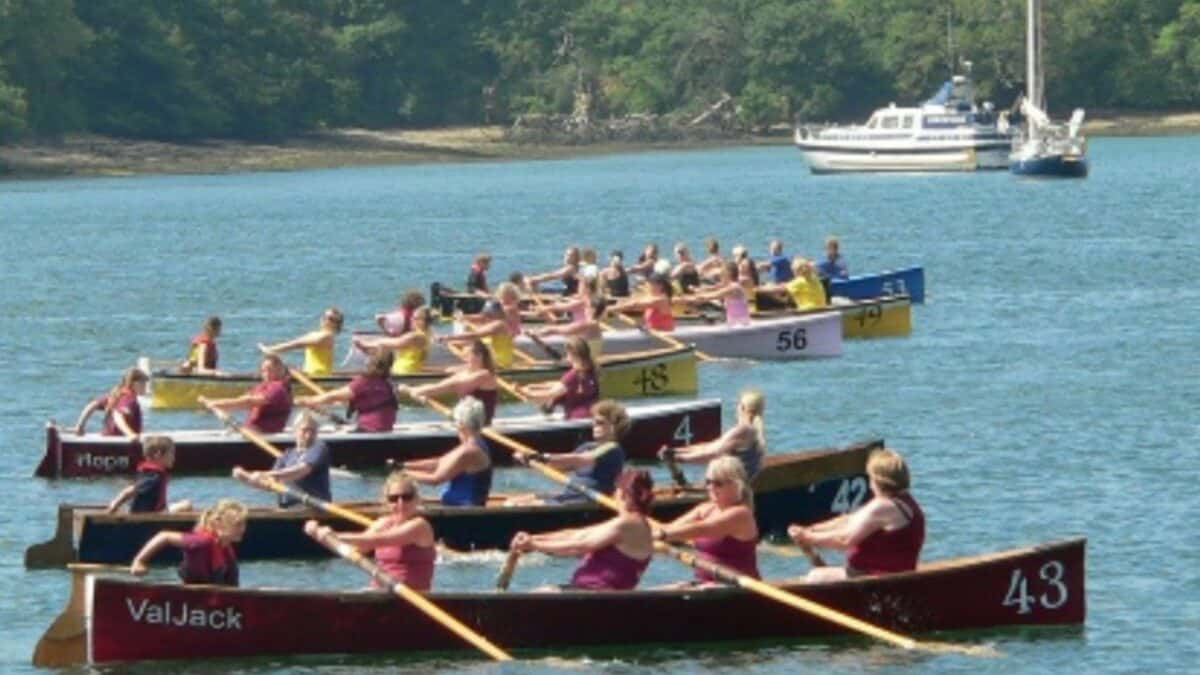
12 Feb 2019
The quest to preserve fixed-seat rowing
In Great Britain with the invention of fixed-seat boats came the possibility to transport cargo, people and more across the vast rivers. It soon became a profession called ‘watermen’ and the boats were named ‘watermen’s boats’. While much of the history has been lost already, pieces of it have come to shape the passions of one Cornish-born man, Chris Baker.
Baker was born in Saltash, a small town in the southeast corner of Cornwall, on the southwest tip of England. At the age of 12, Baker joined a rowing club that was, unbeknownst to him, founded five years earlier by his older brother. Baker learned the traditional Cornish fixed-seat rowing and rowed for about ten years.
“It isn’t long, but that seems like all I ever did growing up, because I did it for those most important year of my young life. All my memories are based around rowing,” Baker says. But he eventually moved to the midlands and lost touch with his Cornish rowing roots.
What Baker found when reconnecting to clubs in recent years shocked him. “There are only six traditional clubs left,” he says. “I am trying to preserve the history because we are losing it. From what I can tell, the type of Cornish rowing that still goes on today is the oldest and longest running form of traditional fixed-seat rowing anywhere.”
The early days
“The oldest talked about and recorded fixed-seat rowing that you’ll find was the Thames watermen. Watermen’s boats were basically the ferries and the fishermen’s boats that we used on the river to transport people or goods across before bridges were built,” Baker explains. These boats were used across the United Kingdom, including on the River Tamar, which separates Cornwall from Devon. “I can’t pin down when the first competition was in Cornwall,” says Baker, “but we are people, it’s just human nature, we’ll race them. I’ve got records of a race from 1824, but it was well-established at that point.”
The watermen’s boats raced in this period were 18 feet (5.48 metres) with two to four oars. They were clinker-built, meaning the planks of timber were overlapping, so the hull was not smooth. These boats were heavy, meant for carrying cargo, but it did not stop them from being raced.
[PHOTO src=”135455″ size=”mediumLandscape” align=”right”]
Invention of the flash boats
As the racing became more intense, so did the innovation around the boats. In the 1920s a boat builder called Goss from Calstock had the idea to make the first purpose-built racing boat.
“He built it lighter and finer. It was of little use as a watermen’s boat,” Baker says. “When it first came onto the scene, a lot of traditional boat builders thought they couldn’t beat this ‘flash-boat’. The name stuck and since then, they have been called flash boats.”
The height of Cornish rowing
With many different boats and races being organised, it was finally decided in 1951 to create an association. The Cornwall Rowing Association was born, uniting the 15-foot boats from the west of the county with the 18-foot boats from the east. What had once been families rowing together now became rowing clubs. The County Championships were created. Crews competed at several regattas over the summer and earned points. The winners at the end of the season were crowned Cornish County Champions.
The evolution of the flash boats continued with the increasing competition. In 1967, the County Champion Chapman family sought out a yacht builder in Plymouth. Together they decided to build a flash boat out of Plywood, rather than timber. There was nothing to ban it in the CRA rulebook, and so it was allowed.
“One year later, Dickie George was at a CRA meeting. Before it started he said to the Chairman over a drink. ‘How many planks do you think has to be the minimum for it to be considered clinker-built?’ ‘At least three, to have two overlaps,’ said the Chairman,” Baker explains with a laugh.
Dickie George held the Chairman to his word. The next year, a three-plank, plywood flash boat entered the scene, but it wasn’t built by George. Frustrated, George went back to the drawing table. He took one large Plywood plank and bent it around the keel of the boat, attaching two small ones above the water line. He created a smooth hull under the water line and the fastest flash boat on the water.
“After those three changes, the CRA made a completely water tight set of rules. And those are still the same today,” says Baker. “The sport was never more popular than at this time.”
A tradition at risk
The height of traditional Cornish rowing was the 1960s and 70s, but ever since it has started to dwindle. Baker says there are only six clubs left now and there are only a few people living who know the history well.
In an attempt to connect better with the history, Baker decided to build his own Cornish flash boat. A carpenter by training, Baker set up in his shop.
“I donated it to a pilot gig club in Devon, but they never used it,” he says. So, he brought the boat back to the midlands and started the first-ever Cornish Rowing Club north of the Tamar. “I have a Cornish rowing club based on a reservoir in the midlands,” he laughs. Baker’s club was recently accepted into the CRA and he is working to build membership.
“It sounds like I am being some sort of martyr to save Cornish Rowing. I don’t mean that. But I want to try to stop the number dwindling,” he says.
For more information, please contact Chris Baker chrisbakerstairman@yahoo.co.uk

